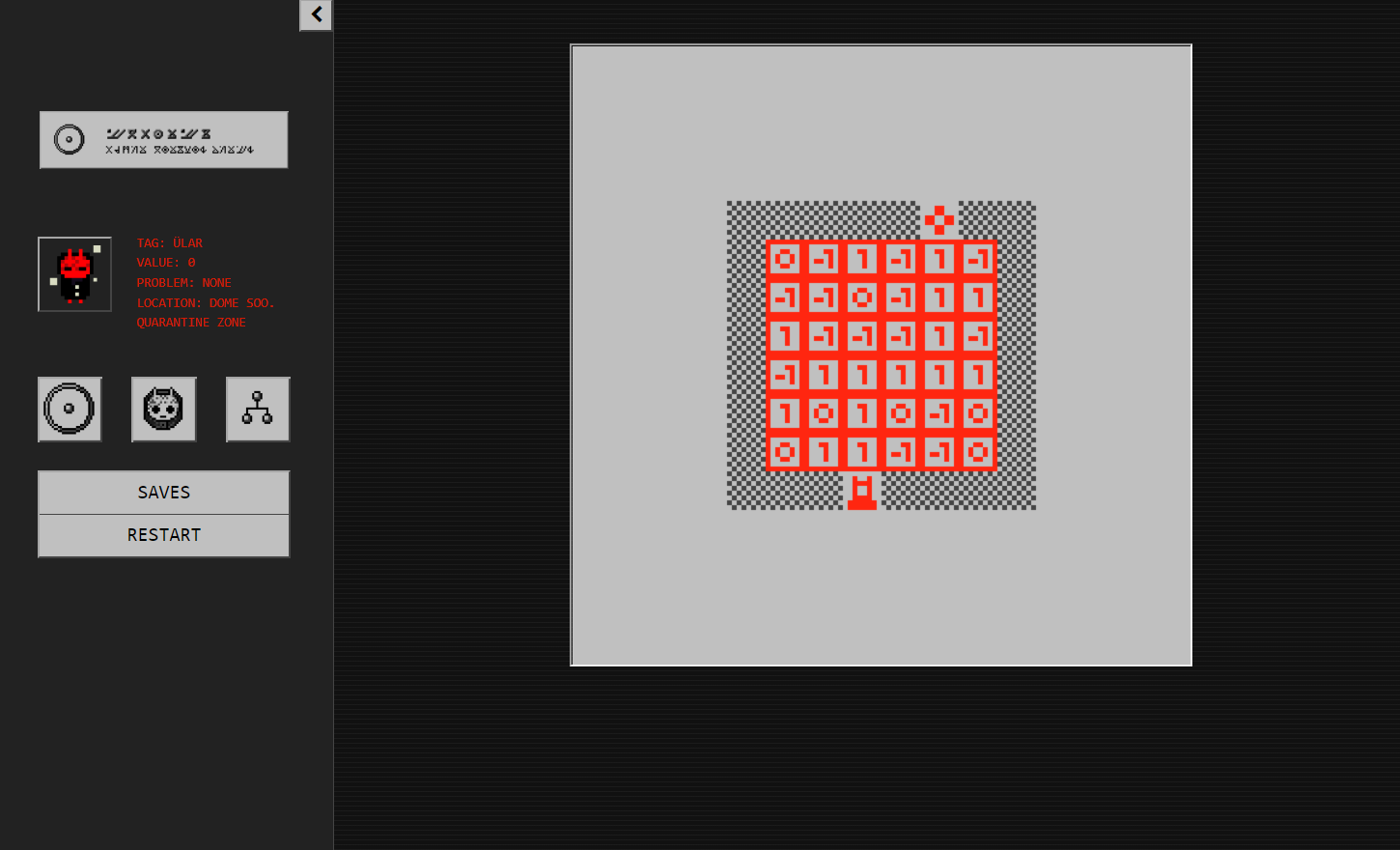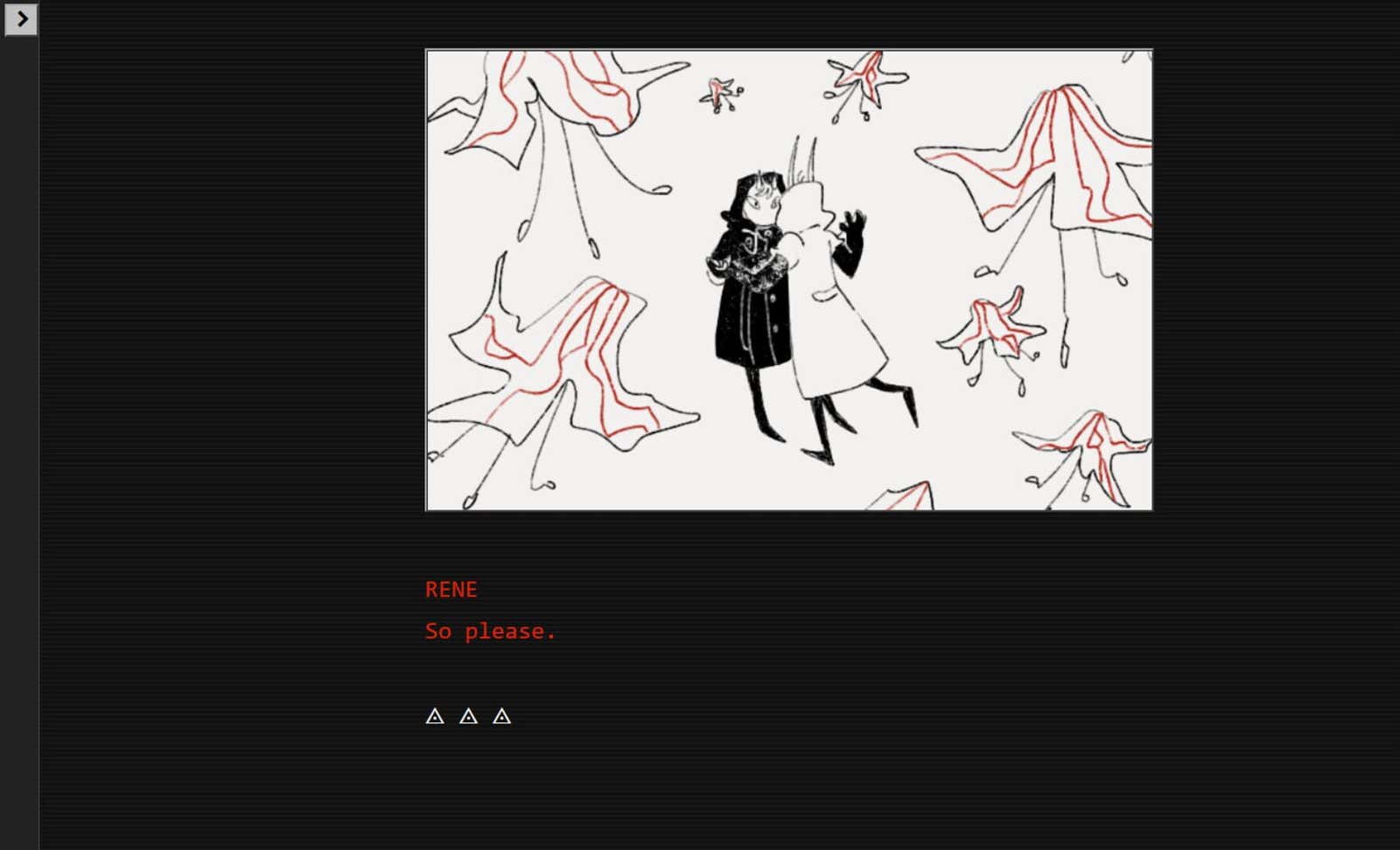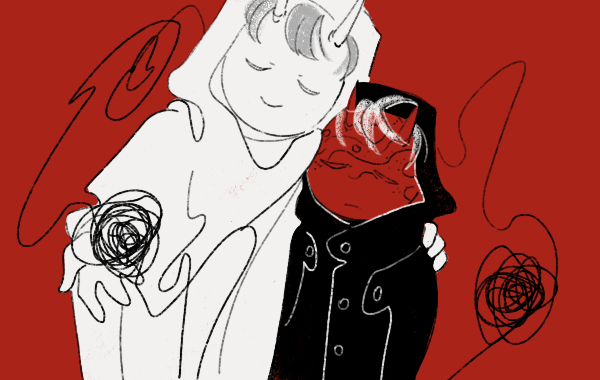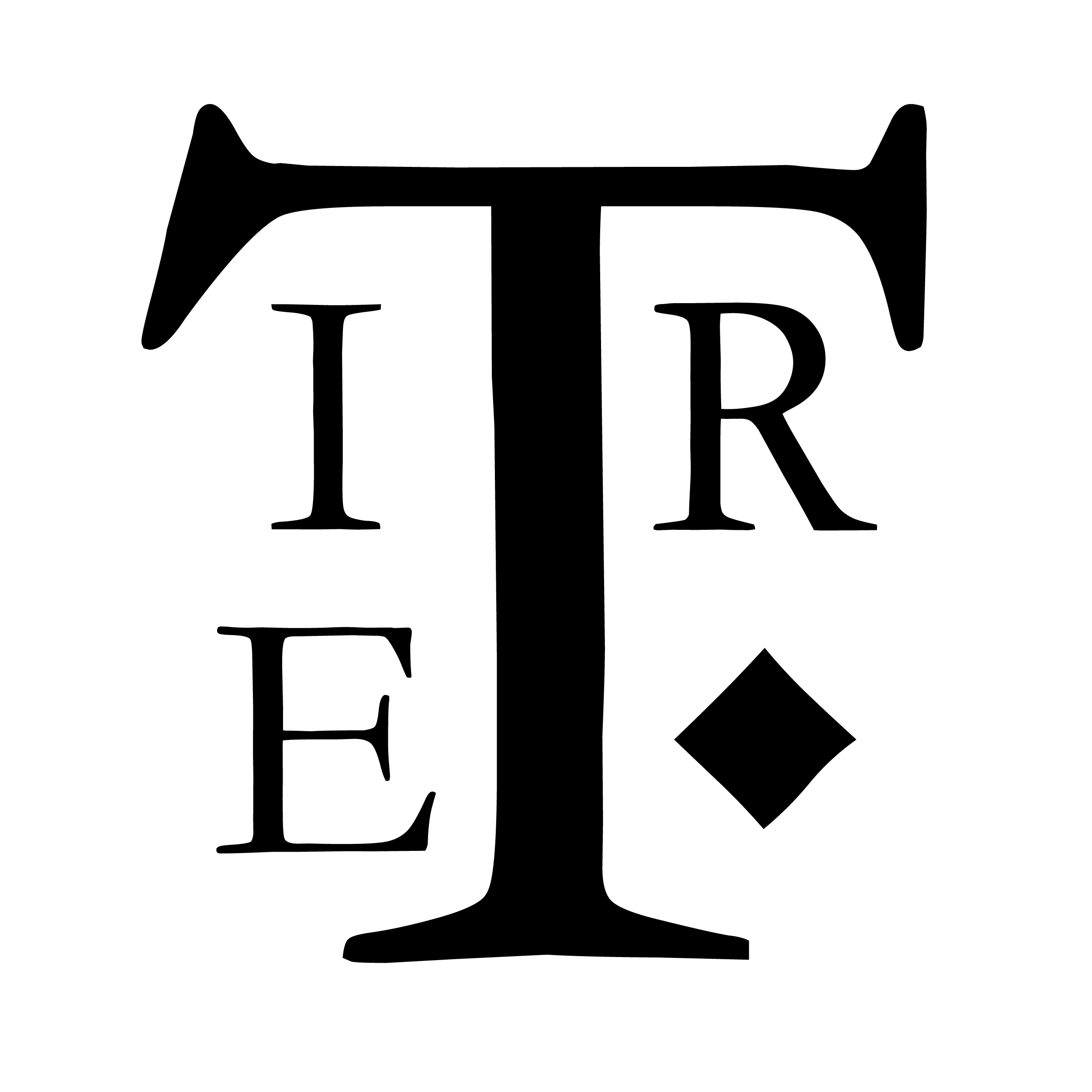Deep Anxiety, Deferred Hope, and Disappointment

To be sick is to be lonely. Axiomatic, perhaps, but important to lay out. Even those most skeptical of something like COVID-19 experienced, even if just vicariously, the social distancing and quarantine of the past few years. We were all there and not there. COVID-19 is a small facet of a broader tapestry, however; cursory glances of the NIH make links between loneliness and disability broadly, eating disorders specifically, and much in between. Loneliness, in its many forms and sizes, affects variably the most severely immunocompromised of us, those of us with chronic pain and fatigue, those with disabilities visible and invisible, psychiatric conditions mutable and immutable, those in palliative care. Loneliness, too, is familiar to the kindergartener with lice quarantined from his classmates, the middle schooler with E. Coli from a bad packed lunch, the high schooler with mono. It’s enticing to make implications of the connection beyond that axiom. More generously, to find metaphors to make sense of it, to find comfort and history in it. And some people might take issue with that.
Susan Sontag’s 1978 extended critical essay Illness as Metaphor is assertive and straightforward, makes itself impossible to misrepresent in thesis–”The most truthful way of regarding illness–and the healthiest way of being ill–is one most purified of, most resistant to, metaphoric thinking.” Even Sontag’s detractors often give leniency to her pen; the woman had a charismatic fire, an on-page reflection of her sharp personal presentation, and that style hard carried her work. Fire and brimstone severity, a rapid study in contrasts, a history of the metaphors themselves. Towards the end, Sontag writes, “To describe a phenomenon as a cancer is an incitement to violence. The use of cancer in political discourse encourages fatalism and justifies "severe" measures—as well as strongly reinforcing the widespread notion that the disease is necessarily fatal. The concept of disease is never innocent.“ Like much of her writing (ex. Against Interpretation, On Photography), the forcefulness has determined the tenor of proceeding conversation. She’d iterate on it later with AIDS and its Metaphors herself a decade later, and through the COVID-19 pandemic, her work was revisited within broader culture to make sense of how we described the virus, spoken of referentially, with contention. A long half-life of the ideas, then.
In charting the history of metaphors and social perspectives on tuberculosis and cancer specifically, the latter of which she was battling during the essay’s production, Sontag’s polemics come with contexts both personal, as defined above, and more broadly cultural. A useful account of the charlatanism around cancer in the atmosphere of the late 70s can be found in Bathsheba's Breast: Women, Cancer & History, a historiography of breast cancer written by James S. Olson. Most prominently featured is husband O. Carl Simonton and wife Stephanie S. Simonton’s theories on psycho-oncology. The couple developed their ideas out of those of Wilhelm Reich (now probably best known for being the basis for Kate Bush’s “Cloudbusting”), in particular his concept of the “cancer personality,” a type of self predisposed towards cancer"due to the stagnation of the flow of life energy of the organism," stemming from those living with “deep anxiety, deferred hope, and disappointment.” The Simonton’s, a radiotherapist husband and psychologist wife, approach the “narcissistic” 70s with a similarly self centered approach; if “the cancer patient almost invariably is contemptuous of himself, and of his abilities and possibilities[…] empty of feelings and devoid of self,” then, as Olson glibly puts it, “the cure was psychotherapy.” By reapproaching the Reichian “cancer personality” as but one facet of developing cancer, developing oncology with respect to psychiatry might give his patients “an edge.” From there, their combined methods of treatment spawned “non”-fiction books and articles, lucrative seminars and training sessions, the Simonton Research center as capstone. Olson notes that in these Simonton hosted retreats, attendees were instructed to “get in touch with their feelings,” “empower themselves,” “find the inner self,” obliterate the “cancer personality,” “confess their secrets,” “abandon their guilts,” “raise their consciousness,” and “take control of their lives.” We hadn’t even put The Oprah Winfrey Show on TV yet.
The Simontons’ iteration of “cancer personalities” and psychooncology probably feel like such obvious quackery but they represent the notions of the time–your wellness, your health, is as much psychology as it is biology. It’s self-determined. If Sontag’s essay makes one point compellingly it is the structural address of victim-centered illness. The onus placed on the individuals inflicted and suffering from illness. But let’s put aside metaphors for a moment. Let’s gamify this instead.

The concern with illness and health, physical and psychological, exists within the framework of Etherane’s Mr. Rainer’s Solve-It Service primarily in the metaphorical, but there is a fluidity between the material and the metaphorical in the fiction that is particularly compelling. Ane’s work, at its most vital, is idiosyncratic, prodding, anthropological, and quacked out. MRSIS is concerned with loneliness, unfulfilled wants and needs, but also wellness, wholeness, of the self, and the social contexts in which such wellness is impossible. It is concerned with chicanery and stasis. More than anything, MRSIS is a satire of the alienation of society and its individuals under the thorough and cruel hand of late-stage capitalism. One might go as far as to say a society diseased with capitalism.
I am less interested in whether Sontag is fundamentally correct in her arguments with regards to Illness and Metaphor than I am in laying out the pre-existing conversation of metaphors of illness, and, inversely, wellness. Likewise, Olson’s work in Bathsheba’s Breast is meant as a framework for the insidious ways we have historically couched wellness in purely personal terms, a bootstraps mentality very endemic to the United States but surely not unfamiliar to Ane’s home country of Estonia, a former Soviet state inundated with tech startups and a strong bias towards center-right politicos. MRSIS is a game of metaphors as anthropology, of sick, sad aliens suffering through the indignity of being in a world, Hjö, that Black Mirror-style presents a crass, social media-poisoned reflection of the anxieties of our own lives (albeit far less tacky, far more successful, and actually funny occasionally, if through sheer gall). Hjö and its inhabitants are sick in more ways than one and utterly consumed with their own perceptions of wellness, the nuances of their biology. I want to explore the implications of the metaphors made within, of sickness and of health.
Let’s put this one out of the way. MRSIS’s initial production predates COVID-19 by a few years but the parallels do rear their nasty heads into the text, and it’s hard not to impose the reading; symbiotic prophylactics (the mask versus the raincoat), intense social isolation and dependency on screens for contact and connection, a sense of environmental hostility. This is not Lorenzo Redaelli’s Mediterranea Inferno, a proper COVID-fic, so to speak, about “collective trauma,” but the impulse, the anxiety is there. While Ane’s preoccupation with the mechanisms of their defamiliarized world goes wide, “collective,” it is just as much centered on Ülar, an individual within these systems, his own idiosyncrasies and sicknesses.
Part of fleshing Ülar out is through the self-help speak Ane deploys liberally throughout. The primary mechanic of the game outside of the Twine engine are the Bitsy-developed interludes involving math puzzles; you’re always to reset your “Value” to 0, as to slip below would be catastrophic to “productivity,” and ÜIar is not yet fulfilled or sufficient in self enough to exceed this baseline. He is “valueless” to greater social productivity, to the Solve-It Service, to (most) of those around him, and therefore marginalized, frequently stepped-upon, routinely dismissed. Wellbeing on Hjö is framed as well in terms of alienation, albeit less from connection and more from “the act of working,” “other works,” and “the products of work,” one of the many helpfully blunt codex entries notes for us. Not so dissimilarly to the Reichian/Simontonian “cancer personality,” ÜIar’s sickness is often made out by others to stem from his lack of self-worth, a mixture of bad personality types (helpfully laid out within the fiction of MRSIS) and his unusual, ailing biology. He is incapable of “taking control of his life.”
Much too is made in text of Ülar’s hunger and its connection to his alienation. He is not ostracized and othered because of his hunger, exactly, but his desire to consume is notable, unseemly to others even in a world where you can buy biodegradable “uibo”, short for “uniblock”, a non-substance meant to be bought to satisfy a craving to purchase. It’s even in the (typically) gnomic store page description: “Mr. Rainer's Solve-It Service follows the story of ÜLAR, a newly recruited Solver with an empty stomach in a world without hunger.” His compulsion to eat drives his activity, provides him with agency within the narrative. In his worst moments, the binge eating is consummated. A Bouquet for All Raincoat-Hjörians, one of the first two endings of the games, sees ÜIar granted a wish; to sate his hunger, atop a mountain of “gifts” (other inhabitants of Hjo, be it Raincoat-Hjorians, Echoes, their toxic waste, their detritus). The sickness of Ülar is consumptive and compulsive. It is a product of the personal and social contexts of his existence.
The framing of A Bouquet is curious, too. All three of the endings are sufficiently apocalyptic for Ülar, referencing the Termination, and A Bouquet propels Ülar towards the Dome Kri’s Ascencion Temple, almost by accident. An encounter with the mysterious Reverse Ülar leaves him scarred and blinded, and he fails again in his assigned duties. The Temple offers him relief, through the charismatic intervention of Oskar. “Here, everyone is able to reach the end of their journey on their own terms, the way they want, anytime,” Oskar tells Ülar. “If you’re aware that your passing is inevitable, I’ll do my utmost to help you feel fulfilled.” Ülar is not just disabled here, like he is in the other routes, he is terminal in A Bouquet under ambiguous terms with only days left, walking down this path, confronted with memory and the specter of himself, the rejection of others. He gives into the consumption of Hjö in more ways than one.

An Ode to Ephemerality, the closest to a happy ending for this ÜIar (one still gutting, to be clear), features prominently the character of Rene, a scientist of a sort surrounded by artificial Raincoat-Hjorians. Rene is the first individual to ascribe value to ÜIar–notably their interactions increase his value to 1, for a time, a melancholic if momentarily triumphant recognition of the actualization he feels in Rene’s care. Rene, like Oskar, approaches ÜIar almost palliatively–less “Make a Wish” foundation, however, more hospice nurse. Rene answers questions for ÜIar, giving him purpose and place. He provides care and safety, nurtures ÜIar’s wellbeing in a way no one else has, only to die himself. He seeks a cure to immortality, seeks Termination, a severance from the cycles of Hjö. It’s a bit of a twist, here–while ÜIar is treated as the patient, his physical wounds nurtured to, his psychological scars treated, it is Rene who dies first. ÜIar is no better in his absence.
The most arresting moments of MRSIS in this regard, the crest of ÜIar’s lonely sickness, is his death in the true route, Bouquet for Ephemerality, or rather our frame for ÜIar’s death. In classic science-fiction fashion the ÜIar we’ve spent time with through the first two routes is a clone, of sorts, a synthetic reflection of another. We meet, and then follow, this ur-ÜIar. He is everything the derivative ÜIar is not–self-sufficient, confident, adjusted to the world, playing the role of puppeteer rather than puppet. He also unceremoniously kills the ÜIar of Rene, of Oskar. This ÜIar’s journey is unfamiliar, with frequent sojourns and asides to the biology of the Hjö.
There is a casual, clinical cruelty in this route–an Echo with two holes is dissected by a curious, sociopathic streamer only to reveal this minor difference reflects no real or visible difference between its insides and any other Echoes. Other Echoes are drugged so as to sever their connections between each other to pit them against each other in dogfights. This other ÜIar is apart from this world, familiar and unconcerned with his mortality, regenerating casually after being mutilated unlike the persistent and disfiguring wounds he had inflicted upon our first ÜIar. The capstone here comes in the form of the epilogue, a strange, uncomfortable point-and-click segment built in-engine as a series of interactions with the remains of the cloned ÜIar. You prod his anatomy, observing its makeup and differences, staring in horror at his dismembered remains, being asked not just to recognize his violation but to participate in it. His “wrongness,” so framed in the narrative, is diagnosticated postmortem.

If Ane’s work embraces allegory as it does here and in previous games like Hello Charlotte through soliloquies of fables and parables, the broader projects of their work are often resistant to being categorized as allegorical, eschewing easy closure through trite analogues. MRSIS is by no means a long game, a svelte three hours, but it is dense with ideas, many of them presented as distanciated through these loosely associative metaphors. This is not a game about illness or wellness in such all consuming terms–it equally could be read with an attentive eye towards its preoccupations with social media. Likewise about the kinds of influences Ane brings liberally into the texture of the work, or of the functions and dysfunctions of its satire. For comparative literature, one could reflect on the malleability of identity and memory in the way one would for Ishiguro. It goes as wide as it can in its limited script. Even still, this is a game that derives meaning and substance from its preoccupations with health and the absence thereof.
I’m thinking too of Ane’s other work. Hello Charlotte, for example, charged as it is with abject emotion (and literal abjection), states cleanly in the developer commentary that it reflects on the personal preoccupations with wellbeing of Ane’s, their neuroses and anxieties. It is not framed like self-help in these earnest asides; it's the kind of intimacy with an audience only afforded to a small but devoted tumblr following, one that may have existed before their pages were expunged. I think this provides context as well for Rainer’s though–the metaphors therein, the Eye Plagues of HC, the paraphilias of Rem in TWC, the deep physical and psychiatric concerns of Ülar as defined within the fiction–vary in manner and scope but ultimately come from the same desire and need to process the world through metaphor. In a brief literature review of Illness as Metaphor, Jack Coulehan, a professor emeritus of medicine with Stony Brook University and a poet and writer himself, posits that the second half of Sontag’s argument is fundamentally incomplete:
Why is it unhealthy to think metaphorically about illness? What harm does it do to the sufferers? Has metaphoric thinking about TB or cancer inhibited our scientific study of them as diseases? [...] Metaphoric (imaginative) thinking is the way we humans discover meaning in our lives. Serious illness is an important event in a life narrative. Thinking about illness (as opposed to thinking about disease) without using metaphor is probably neither desirable nor possible.
Even if this is reductive, I don’t think I disagree. Ane’s work provides one argument therein. The fiction of MRSIS, and of Ane generally, excoriates itself and the reality it is released into through its casual asides, its fable-like soliloquies that summate its own arcs, the blunt satirical framing devices, the open and easy figuratives of the text. The vitality of the work is in these finer details, the flawed and strange texture, the breadth of ideas presented through metaphor. MRSIS reflects on loneliness, on being, on wholeness, precisely through its “imaginative thinking.” Here, unresistant and impure, it finds meaning, purpose, honesty.


